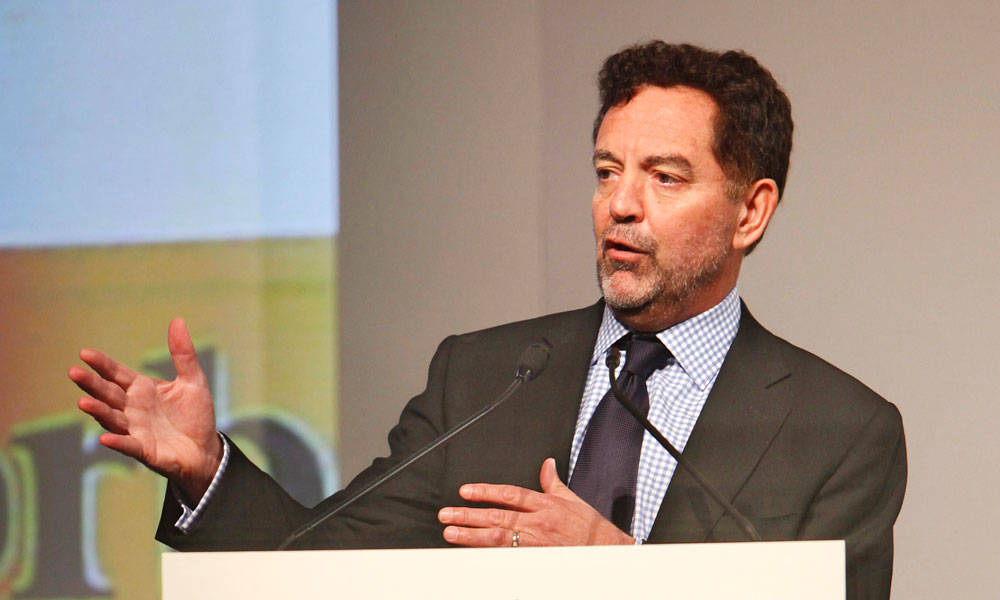
#ASAE18 Game Changer: The Case for Intellectually Diverse Teams
Rich Karlgaard, a Game Changer at the ASAE Annual Meeting & Expo in August, says facing rapid technological change demands technological smarts. But experience and empathy count too.
The pace of change is accelerating, says Rich Karlgaard. But leaders still have plenty of opportunities to keep up.
That’s one of the futurist’s core messages, which he’ll deliver at a Game Changer session at the ASAE Annual Meeting & Expo in Chicago on August 20. While many organizations are trying to read the tea leaves of the daily shifts in politics and economics, he says, they’re missing the broader sweep of technological change.
Thinking-style diversity and age diversity are absolutely huge.
“What trumps all of this is the pace at which artificial intelligence is moving,” says Karlgaard, the publisher of Forbes, where he also works as a columnist. Technological change, he says, is far outstripping the Moore’s Law about computing power doubling every two years. Between the cloud, internet of things, and increasingly sophisticated algorithms, many industries are ripe for serious disruption.
To respond to this, Karlgaard says that organizations will need to assemble teams that are “smart and adaptive.” But he argues that the workforce of the future needn’t focus on those who are just tech-savvy. In this new world, he says, there will be a more pressing need for experienced and complex thinkers.
“I think the mistake leaders make is they look at companies like Google, Facebook, and Amazon and go out and pluck kids who score 800 on their math SAT, went to one of maybe 10 universities, and think that’s the way that they’re going to catch up in this digital realm,” he says. “I believe that the real hidden gem for a lot of these companies are late bloomers and liberal arts graduates who everybody’s written off.”
The benefit of the liberal arts graduate, he says, is a flexibility in thinking and openness to new ideas that might not otherwise be considered. “Things like pattern recognition have now become more valuable inside of a company,” he says. “So has empathy. And you want pattern recognition and empathy in people leading projects. Spend some time in Silicon Valley and you can see a lot of people who are brilliant but who can’t make the leap into management. So people with these social skills become very, very important going forward.”
And the thing about pattern recognition and empathy, Karlgaard says, is that they are capacities that keep developing and improving into our forties. Hence his interest in late bloomers, the subject of a book Karlgaard is publishing next year.
But beyond those categories, he says, what organizations need are team members who’ve demonstrated some essential confidence and resilience. He cites the example of the insurer Northwestern Mutual, which looks for talent in unlikely places but who show that they’re “adaptable and very persistent.” For example, one place it looks at is Division III athletes: “They’ve learned teamwork and leadership because they wanted to do it—they’re not glory hounds.”
Research by the ASAE Foundation’s ForesightWorks project has spotlighted some of the challenges and opportunities that associations face from trends such as automation, artificial intelligence, and an aging population. Karlgaard suggests that organizations can address those issues by building flexible teams of younger and older workers. But it will need to do so mindfully, recognizing the blind spots that younger and older, left- and right-brained employees have and taking steps to ensure they can work well together.
“Diversity on teams is hugely important,” he says. “In addition to the very important racial and gender diversity that companies think about, and should think about, there’s also thinking-style diversity and age diversity. Those are absolutely huge. The question is, how do you get intuitive people and analytical people on the same team? Because the 360 answer to a lot of problems may involve both views. If you really want to become a technologically fluent company—and you had better—then you’ve got to integrate some of these young, brighter technology talents in your organization earlier and mentor them up, skill them up.”
Forbes Publisher Rich Karlgaard, an ASAE Annual Meeting Game Changer, says building flexible teams with different mindsets is key. (Keppler Speakers)






Comments